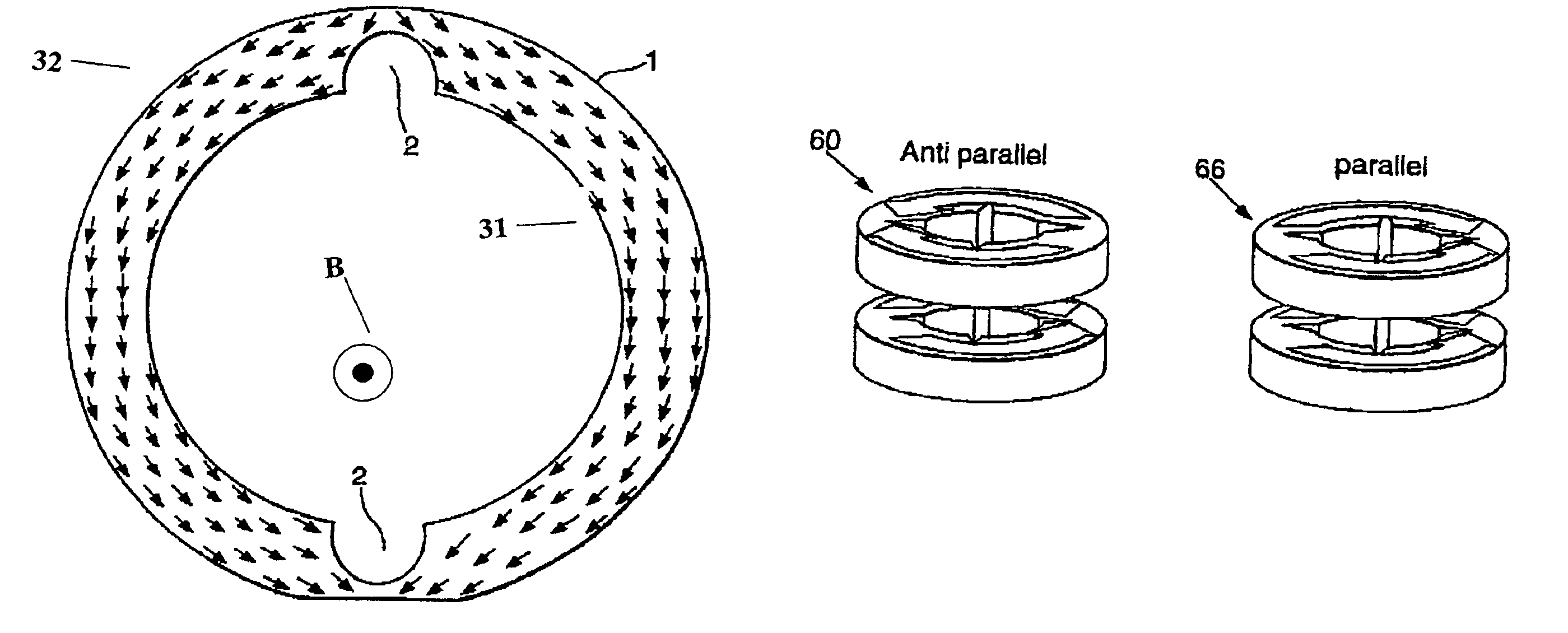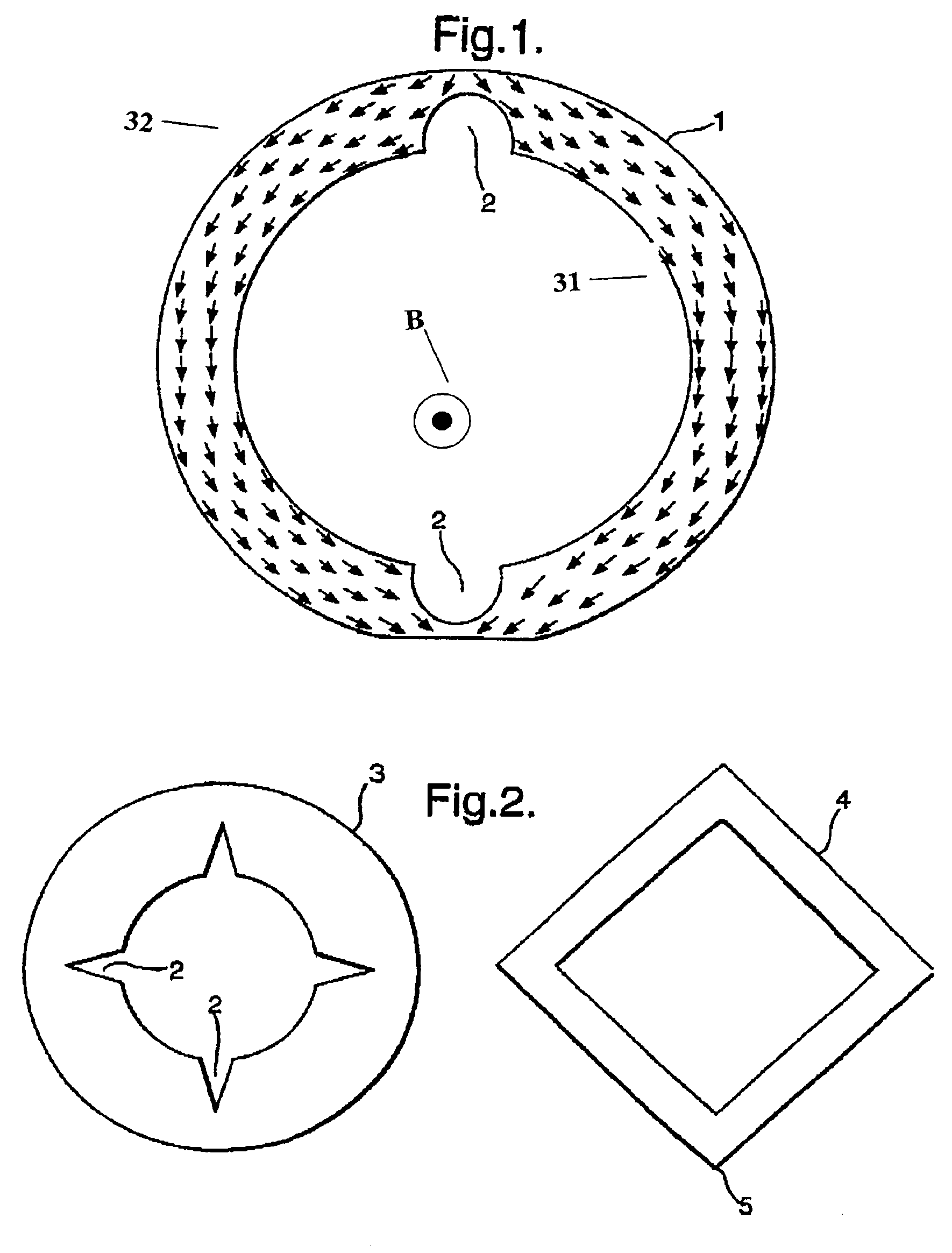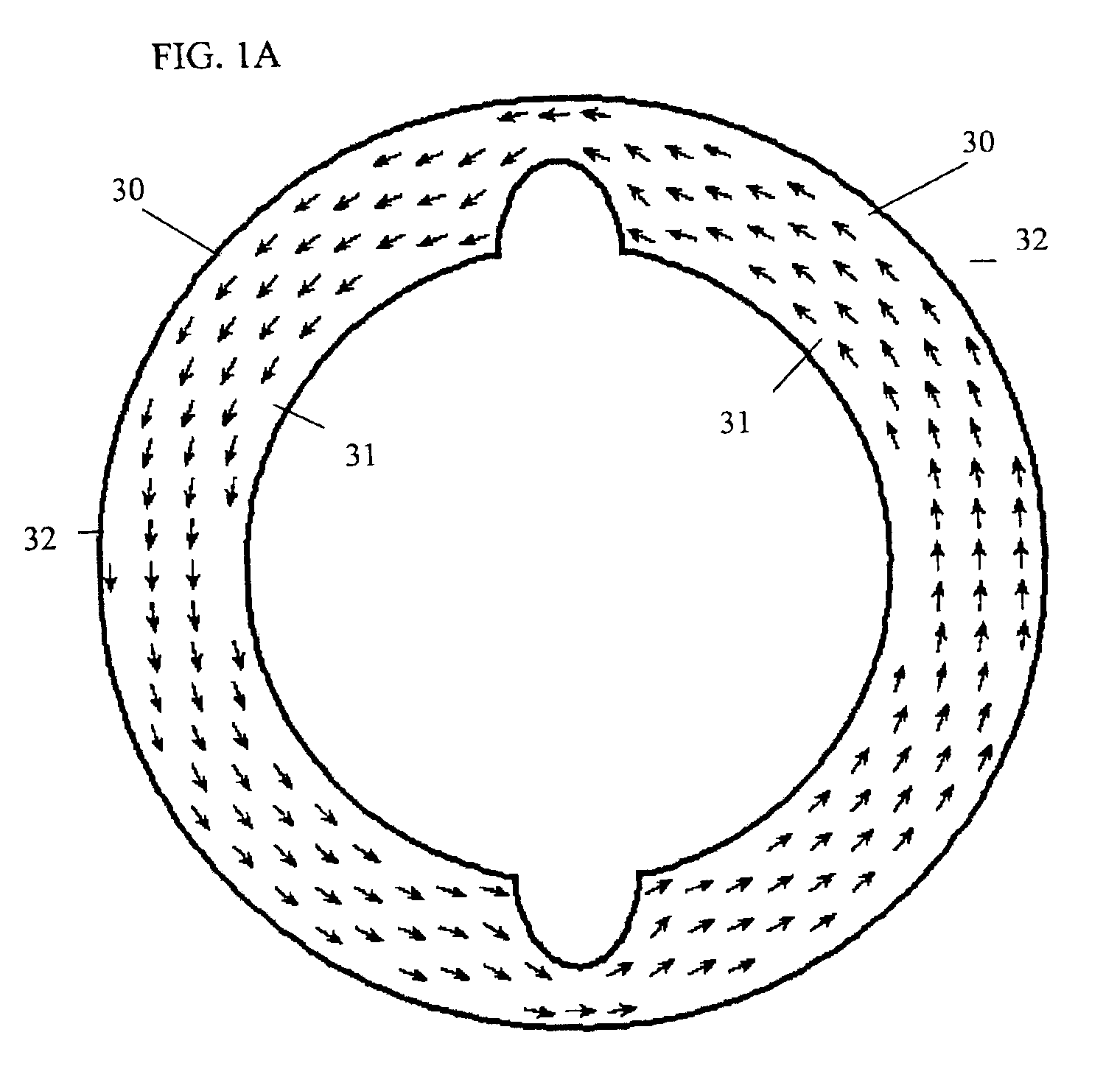Magnetic element with switchable domain structure
a domain structure and magnetic element technology, applied in the field of magnetic elements with stable but switchable domain structures, can solve the problems of complex switching behaviour, sensitive to imperfections, edge effects, etc., and achieve the effect of high density of individual elements and high speed switching
- Summary
- Abstract
- Description
- Claims
- Application Information
AI Technical Summary
Benefits of technology
Problems solved by technology
Method used
Image
Examples
Embodiment Construction
[0023]FIG. 1 shows a ferromagnetic loop 1 according to a first example of the present invention. The loop 1 is substantially circular and has two diametrically opposed notches 2 cut into the inside face of the loop. The diameter of the loop can be the order of a few nanometres. The direction of the magnetic field lines are in the same direction shown by the arrows. In FIG. 1A, the arrows are in opposite directions. The loop as shown comprises two equally sized magnetic domains 30A, 30B separated by two domain walls. The domain walls are located between and include leading edges 31 and trailing edges 32, the narrow portions of the loop by the notches 2. This domain configuration, hereinafter referred to as an “Onion State”, is stable as it is energetically favorable for the loop as a whole. The two dominant energy considerations which determine the stable domain configurations of the loop are the energy associated with the formation of a magnetic domain wall and the energy contained ...
PUM
| Property | Measurement | Unit |
|---|---|---|
| thickness | aaaaa | aaaaa |
| magnetisation | aaaaa | aaaaa |
| resistance | aaaaa | aaaaa |
Abstract
Description
Claims
Application Information
 Login to View More
Login to View More - R&D
- Intellectual Property
- Life Sciences
- Materials
- Tech Scout
- Unparalleled Data Quality
- Higher Quality Content
- 60% Fewer Hallucinations
Browse by: Latest US Patents, China's latest patents, Technical Efficacy Thesaurus, Application Domain, Technology Topic, Popular Technical Reports.
© 2025 PatSnap. All rights reserved.Legal|Privacy policy|Modern Slavery Act Transparency Statement|Sitemap|About US| Contact US: help@patsnap.com



